Even as the elation of the 19th Commonwealth Games 2010 staged in Delhi subsides, this is an opportune time for educationists, principals and teachers to give a massive boost to sports education in India’s schools and colleges. Summiya Yasmeen reports
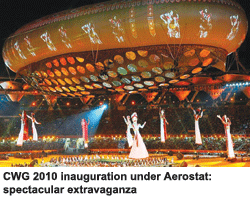 The litany of disasters — reminiscent of failed basket-case pre-Green Revolution India rather than contemporary post-liberalisation India, the world’s second fastest growing economy — almost torpedoed the 19th Commonwealth Games (CWG) 2010 staged in New Delhi last month (October 3-14). As shameful reports of unfinished jobs and shoddy workmanship despite fantastic cost-overruns, collapsing over-bridges, falling ceilings, and filthy rooms and lavatories in the CWG village dominated the print and television media headlines the world over, star athletes from several Commonwealth countries pulled out of the games.
The litany of disasters — reminiscent of failed basket-case pre-Green Revolution India rather than contemporary post-liberalisation India, the world’s second fastest growing economy — almost torpedoed the 19th Commonwealth Games (CWG) 2010 staged in New Delhi last month (October 3-14). As shameful reports of unfinished jobs and shoddy workmanship despite fantastic cost-overruns, collapsing over-bridges, falling ceilings, and filthy rooms and lavatories in the CWG village dominated the print and television media headlines the world over, star athletes from several Commonwealth countries pulled out of the games.
However a special committee appoin-ted by the Congress-led UPA-II coalition working in close coordination with the Congress state government of Delhi, wrested organisation of CWG 2010 from the official organising committee at the eleventh hour and salvaged the situation. India’s famous jugaad (any which way/muddling through) management style not only saved CWG 2010, but trans-formed this showcase event staged at a reportedly massive cost of Rs.30,000-70,000 crore into a globally acclaimed triumph.
Beginning with a spectacular two-hour inaugural extravaganza on October 3 at Delhi’s Jawaharlal Nehru Stadium where 1,000-plus school children and 8,000 artistes from 28 diverse states of the Indian Union sang and danced under a gigantic laser-lit 40 x 80 x 12 metre helium balloon with a 360 degree live electronic images projection surface christened Aerostat, to the equally dazzling closing ceremony watched on television by 16 million people on October 14 interrupted by India’s best-ever track and field medals haul (38 gold, 27 silver and 36 bronze) in an international sports meet, CWG 2010 has precipitated a renaissance of Indian sport which has fired the national imagination.
As Indian athletes cheered to the rafters by crowds repeatedly ascended the winners podium, bagging 38 gold medals — second only to Australia and beating its once imperial master Great Britain into third place — the consensus of popular opinion is that CWG 2010 could prove a tipping point, the beginning of a renaissance to transform the country’s perennially also-ran athletes and sportspersons into world champions.
This new sentiment was reflected in an opinion poll conducted by the Times of India (October 16) in the country’s four largest metros — Delhi, Mumbai, Kolkata and Chennai. An overwhelming 85 percent of respondents declared CWG 2010 a success which has enhan-ced the country’s image internationally, with 88 percent declaring that India has come of age as a sports nation. A month earlier before the start of the games, over 50 percent of respondents had opined that CWG 2010 would be an embarrassing failure because of the spate of corruption scandals tumbling out of the organising committee’s closet.
This sea change in public attitudes to CWG 2010 and the sudden upsurge of interest in sports other than cricket, is largely because of the exceptional showing of the country’s athletes and sportspersons who won 101 medals not only against the handpicked champions of 71 countries, but also in competition against the country’s irredeemably corrupt and disabling sports associ-ations and Central and state government education and sports ministries. Moreover for the first time in the history of the Commonwealth Games (the first Games were held in 1930 in Hamilton, Canada), Indian athletes — the majority of them women — won 12 medals in athletics with the women’s quartet burning track to a historic gold in the women’s 4 x 400 m relay, and three women scripting the first ever podium sweep in CWG history by winning all three medals in the discus throw event. Athletic and field sports apart, India bagged three golds in racquet games — two in badminton and one in tennis, and its markspersons won 14 gold, 11 silver and five bronze medals with its matspersons chipping in with ten gold, five silver and four bronze.
.gif) “The great showing of our athletes and sportspersons in the Commonwealth Games is especially commendable because they triumphed despite a disabling training environ-ment. New sports talent and national heroes have surfaced who now have to be nurtured and groomed to compete and succeed at the next level — the Asian and Olympic Games. We should capitalise on the interest, momentum and strong national pride which CWG 2010 has generated to push for reform of our sports administration system, invest in creating an enabling environment for talented sportspersons, and build a sports culture,” says Krishna Bhupathi, founder director of the Nike Bhupathi Tennis Village on the outskirts of Bangalore which currently offers intensive tennis coaching to 85 children in the age group six-18.
“The great showing of our athletes and sportspersons in the Commonwealth Games is especially commendable because they triumphed despite a disabling training environ-ment. New sports talent and national heroes have surfaced who now have to be nurtured and groomed to compete and succeed at the next level — the Asian and Olympic Games. We should capitalise on the interest, momentum and strong national pride which CWG 2010 has generated to push for reform of our sports administration system, invest in creating an enabling environment for talented sportspersons, and build a sports culture,” says Krishna Bhupathi, founder director of the Nike Bhupathi Tennis Village on the outskirts of Bangalore which currently offers intensive tennis coaching to 85 children in the age group six-18.
Yet while it would be ungenerous and churlish to deny the track, field and sports stars of CWG 2010 their moment of glory, it’s somewhat premature to herald India where education — especially sports education — has been accorded minimal importance in the country’s centrally planned economy during the past half century, as a front-rank sports nation. Indian athletes and sportspersons have a long way to go before becoming a force to reckon with in the more competitive Asian and Olympic Games. For instance in the 100 metres sprint dash the Indian record is 10.3 seconds, set in 2005. This timing was achieved in the first CWG in 1930 by the Canadian Percy Williams, and world sprint champion Usain Bolt clocked 9.69 seconds at the Beijing Olympics 2008. Likewise K.M. Binu’s India record of 45.48 seconds in the 400 metres sprint was achieved by Louis Jones of the US 49 years earlier. And the legendary Jesse Owens, star of the Berlin Olympics 1936, had leaped 8.08 metres in the long jump event, a full 69 years before Amrit Pal Singh made it the longest leap in India’s sports history in 2004.
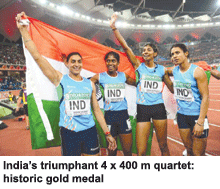 Although CWG 2010 was not a cakewalk for Indian sportspersons given that athletes from Australia, Canada and the UK, who have always given good account of themselves in the Olympics, were ranged against them, absence of the world’s two biggest sports nations — the US and China — makes CWG triumphs an inaccurate measure of India’s global ranking in the comity of sporting nations. Moreover scary stories of sub-standard infrastructure and poor hygiene and sanitation facilities prompted top-rung track and field stars from the UK, Canada and Australia to pull out of CWG 2010. A sterner test awaits India’s new track and field and sports champs in the near future in the Asian Games, which begin on November 12 in Guangzhou, China.
Although CWG 2010 was not a cakewalk for Indian sportspersons given that athletes from Australia, Canada and the UK, who have always given good account of themselves in the Olympics, were ranged against them, absence of the world’s two biggest sports nations — the US and China — makes CWG triumphs an inaccurate measure of India’s global ranking in the comity of sporting nations. Moreover scary stories of sub-standard infrastructure and poor hygiene and sanitation facilities prompted top-rung track and field stars from the UK, Canada and Australia to pull out of CWG 2010. A sterner test awaits India’s new track and field and sports champs in the near future in the Asian Games, which begin on November 12 in Guangzhou, China.
“India may have reason to gloat over the 100-plus medals at the Common-wealth Games, but next month’s Asian Games will provide a more accurate index of our sportspersons’ calibre when they compete with those from China, Korea and Japan… If the absence of top-class champions from Delhi’s arena saw the emergence of new home bred stars, they now face a field that will see the world’s best descend on the coastal city of China all fresh and ready to take on the might of Asia,” writes sports commentator Sandeep Narayan in the Bangalore Mirror (October 16).
All indications are that China, which emerged the world’s premier sports superpower at the Beijing Olympics 2008 surpassing even USA in the medals tally with 100 medals including 51 gold, will dominate the forthcoming Asian Games. Comments India’s golden girl Saina Nehwal who with her cliffhanger last minute gold in badminton singles pushed India to second position — above Britain — in the CWG 2010 gold medals league table: “Of course the Asian Games will be tougher, but hopefully we can keep the momentum going till next month and come back with a medal. Yet the Chinese will be hard to beat in all events, including badminton.”
Although following the unprecedented medals tally in CWG 2010 the mood in the 609-strong Indian contingent all set to participate in the 16th Asian Games is upbeat, expert opinion is that China’s superbly fit and trained track and field stars will be strides ahead of India’s best. Which is hardly surprising because unlike pusillanimous Central and state governments in India, the People’s Republic of China has made provision of high-quality world-class sports education and training to children and youth a top national priority, investing heavily in a long-term national sports development plan. For instance, to achieve its publicly articulated goal of dislodging the US from its traditional premier position on the Olympic scoreboard in Beijing 2008, China began preparing a decade earlier.
Shortly after it was awarded the Olympic Games 2008 in 2001, the Chinese government launched a strategic sportspersons development plan codenamed 119 Project (a reference to the number of Olympic gold medals up for grabs in aquatic and track and field events). Under this plan for which a massive war-chest of Yuan 5 billion (Rs.3,300 crore) was budgeted, foreign coaches were hired to nurture and prepare athletes, rowers and swimmers to world standards. Yet that was the icing on the cake, with huge invest-ments made earlier in sports education at the school level.
According to an informed estimate, 24,000 primary schools with superb sport infrastructure were built for 6 million children. From age 12, up to 8 percent of the best performers in sports schools are channeled into ‘spare time’ sports schools where they board during the week. At 16, the best 360,000 countrywide are enroled in 2,600 specialist regional and national sports schools, where sports education tops the curriculum.
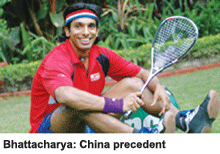 “The lesson we need to learn from China is that long-term sports planning is absolutely necessary to succeed in multinational sports meets and tournaments. China started training hundreds of thousands of children and youth in 1998 in preparation for the 2008 Olympics. Likewise we need to formulate long-term mass-based plans for each sport with a ten-year peaking vision. Moreover if we wish to produce Olympic and world champions, we need to take sports to the masses. Right now less than 25 percent of our children and youth are engaged in sports and games. We need to begin afresh encouraging sports education, providing play spaces for children, and building public sports infrastructure to enable at least half of India’s 450 million child population to engage with athletics, games and sports. From among them, the best must be provided expert coaches and training facilities,” says Ritwik Bhattacharya, five-times national squash champion and recipient of the Rajiv Gandhi Sports Award, and the first Indian to break into the Top 50 PSA (Professional Squash Association) world rankings.
“The lesson we need to learn from China is that long-term sports planning is absolutely necessary to succeed in multinational sports meets and tournaments. China started training hundreds of thousands of children and youth in 1998 in preparation for the 2008 Olympics. Likewise we need to formulate long-term mass-based plans for each sport with a ten-year peaking vision. Moreover if we wish to produce Olympic and world champions, we need to take sports to the masses. Right now less than 25 percent of our children and youth are engaged in sports and games. We need to begin afresh encouraging sports education, providing play spaces for children, and building public sports infrastructure to enable at least half of India’s 450 million child population to engage with athletics, games and sports. From among them, the best must be provided expert coaches and training facilities,” says Ritwik Bhattacharya, five-times national squash champion and recipient of the Rajiv Gandhi Sports Award, and the first Indian to break into the Top 50 PSA (Professional Squash Association) world rankings.
This line of thinking — and particularly the dramatic emergence of China as a global sports superpower — evidently impacted the Union sports ministry in Delhi. According to a feature in India Today, an International Sports Division (ISD), created in 2008 under the leadership of Rahul Bhatnagar, joint secretary in the Union sports ministry, prepared and implemented a master plan to intensively train and mentor 1,140 athletes over a 30-month period in preparation for CWG 2010.
“Under the umbrella of the sports ministry, the division’s mandate was that India should win between 96 and 125 medals and more importantly no hurdle should come in the way whether it was money, training and facilities, proper diet, international exposure or the services of the best international coaches. An unpreced-ented Rs.678 crore was earmarked to be spent on training (55 percent), scientific support to sportspersons (35 percent) and infrastructure. But more crucial to success was to restrict the role of the sports federations that are run like serfdoms mostly by politicians with little sporting background… ISD’s plan after identifying areas of weakness was to provide intensive training of 530 days in India, 225 days of training and competition abroad to 1,140 players in 18 sporting disciplines,” writes Mihir Srivastava in India Today (October 25).
Yet the unprecedented investment in preparing India’s athletes and sports-men apart — allocation of Rs.678 crore, expert coaching and state-of-the-art infrastructure and training facilities — the major triumph of ISD was that it was able to prevent politicians-dominated sports federations from interfering in the training regimen of athletes.
In most analyses of the consistently poor showing of Indian sportspersons in international arenas, opinion is unanimous that the stranglehold of politicians and bureaucrats over the country’s numerous sports associa-tions is a major causative factor. India had the dubious distinction of sending an almost equal contingent of officials (42) and competitors (57) to the 2008 Beijing Olympics. Almost all sports federations and associations in the country are headed by active or former politicians in honorary (unpaid) capacity. However these honorary positions offer a plethora of perquisites of office such as free travel, five-star hotel accommodation, daily allowances and foreign junkets. Hence they are perfect havens for out-of-office politi-cians, retired bureaucrats and service officers. Even if they are strangers to the sport whose association they chair.
For instance Congress MP Suresh Kalmadi — chairman of the CWG organising committee who is at the centre of allegations of the Rs.70,000 crore CWG scam — has headed the Indian Olympic Association for over 25 years. Senior BJP leader Vijay Kumar Malhotra has been the president of the Archery Association of India for a record 32 years. Likewise independent MP Digvijay Singh has been president of the National Rifle Association for ten years and former Union finance minister Yashwant Sinha the president of the All India Tennis Association for 19 years. A proposal by the Union sports ministry in May to limit the tenure of heads of sports association to 12 years has been vehemently opposed and rejected by all sports chieftains.
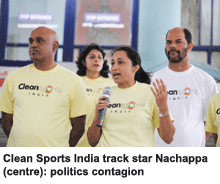 “The domination of politicians over sports federations is one of the prime reasons why India hasn’t been able to produce world-class champions. They have done Indian sports a great disservice by importing the worst practices of their profession — corruption and nepotism — into sports. The few athletes who have managed to succeed have done so despite, not because, of their associations. Sports associations have to be professionally managed by well-paid professionals and sportspersons knowledgeable about sports, training, administration and fund raising, and India has a sufficiently large pool of talented former sportspersons ready to take on this responsibility. Following the exposure of mass scale corruption by politicians in CWG 2010, this is a good time to begin reform of the nation’s sports associations to transform them into enabling sports-friendly organisations,” says Ashwini Nachappa, India’s former track star and vice president of Clean Sports India, a national movement launched on June 23 (International Olympic Day) by former olympians and sportspersons to create an “environ-ment wherein sportspersons can manage local level clubs, state level associations and national level federations of sports associations”.
“The domination of politicians over sports federations is one of the prime reasons why India hasn’t been able to produce world-class champions. They have done Indian sports a great disservice by importing the worst practices of their profession — corruption and nepotism — into sports. The few athletes who have managed to succeed have done so despite, not because, of their associations. Sports associations have to be professionally managed by well-paid professionals and sportspersons knowledgeable about sports, training, administration and fund raising, and India has a sufficiently large pool of talented former sportspersons ready to take on this responsibility. Following the exposure of mass scale corruption by politicians in CWG 2010, this is a good time to begin reform of the nation’s sports associations to transform them into enabling sports-friendly organisations,” says Ashwini Nachappa, India’s former track star and vice president of Clean Sports India, a national movement launched on June 23 (International Olympic Day) by former olympians and sportspersons to create an “environ-ment wherein sportspersons can manage local level clubs, state level associations and national level federations of sports associations”.
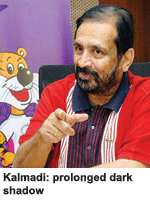 Bangalore-based Nachappa who won three gold medals at the South Asian Federation Games (Pakistan, 1988), a silver at the Asian Games (1990), and represented India at the Seoul Olympics (1988) is doing more for Indian sport. In 2004 she promoted the Karambiah Academy for Learning & Sport in her native Coorg district. This CISCE-affiliated K-10 school offers intensive training in five sports — athletics, badminton, tennis, cricket and hockey — to 500 children.
Bangalore-based Nachappa who won three gold medals at the South Asian Federation Games (Pakistan, 1988), a silver at the Asian Games (1990), and represented India at the Seoul Olympics (1988) is doing more for Indian sport. In 2004 she promoted the Karambiah Academy for Learning & Sport in her native Coorg district. This CISCE-affiliated K-10 school offers intensive training in five sports — athletics, badminton, tennis, cricket and hockey — to 500 children.
The dark shadow of politicians-bureaucrats over Indian sports aside, most sportspersons lament woefully inadequate funding as a major problem of Indian sport, cricket excepted. For fiscal 2010-11, the Union sports ministry’s budget is Rs.3,565 crore — Rs.2,069 crore of which was spent in preparing athletes and sportspersons for CWG 2010. By any yardstick, the remaining Rs.1,496 crore is inadequate for offering sports education to the country’s 450 million children under 18 years. Moreover two-thirds of the sports budget is consumed by salaries of officials and bureaucrats with the ministry providing minuscule handouts to state government sports associations and federations. And such is the herd mentality of corporate India, that 90 percent of sponsorships are invested in cricket, making the Board of Control for Cricket in India (BCCI) — chaired by yet another politician, National Congress Party supremo and Union agriculture minister Sharad Pawar — the world’s richest sports body. Other Olympic sports such as tennis, badminton, athletics, archery and swimming have to subsist on pitiful government handouts and support.
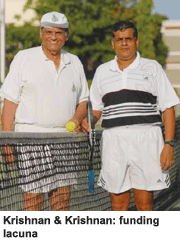 “Lack of funding is one of the biggest problems of Indian sports. Even the money that is allocated for sports is not spent efficiently. Corporate sponsorship is also rare for sports other than cricket,” says Ramesh Krishnan, former Wimbledon junior tennis champion (1979) and India Davis Cup star who together with his father, the legendary tennis great Ramanathan Krishnan, runs the Krishnan Tennis Centre (estb. 1995) in Chennai.
“Lack of funding is one of the biggest problems of Indian sports. Even the money that is allocated for sports is not spent efficiently. Corporate sponsorship is also rare for sports other than cricket,” says Ramesh Krishnan, former Wimbledon junior tennis champion (1979) and India Davis Cup star who together with his father, the legendary tennis great Ramanathan Krishnan, runs the Krishnan Tennis Centre (estb. 1995) in Chennai.
Sports educators and pundits believe that the stupendous success of CWG 2010 which has aroused public interest in a whole range of track and field events and several sports other than king cricket, offers a good opportunity for India Inc to diversify its sports sponsorship portfolio. Writes Desh Gaurav Chopra Sekhri, a sports attorney with J. Sagar Associates (Indian Express, October 13): “India is on the cusp of greatness, and one cannot fathom the extent to which India can synergise and leverage this harmonious blend, especially if the private sector gets involved by sponsoring grassroots development, sponsoring events, and partnering with the sports federations and public sector to create and sustain sports infrastructure, and human capital.”
Sekhri’s advice to encourage and nurture a sports culture at the grassroots needs to be heeded, because at bottom, the prime factor behind India’s pathetic performance in national and international theatres of sport is that the national pool of sportspersons is too shallow. Some estimates indicate that the number of people engaged in serious sports activity after leaving school is a mere 25,000 countrywide. On the other hand in the neighbouring People’s Republic of China 360,000 16-plus-year-olds are under intensive training in 2,600 specialist regional and national sports academies. Quite clearly if India is to produce internationally competitive athletes and sportspersons, this shallow pool has to be deepened and widened. This requires the sustained promotion of sports and games in all of the country’s 1.28 million schools and 31,000 colleges.
.gif) “Traditionally schools in India have accorded greater importance to academics than sports. But this is fast changing as school managements and parents are becoming aware that sports is an integral part of education, and that engaging in sports activity not only helps children remain fit and healthy but also develops important social and life skills. Unfortunately in most schools sports is equated with boring physical education classes where children are forced to do mindless drill — a sure way to kill their enthusiasm for physical activity. Children play for fun and enjoyment and hence a good sports education programme must incorporate fun and build children’s athletic skills by exposing them to a gamut of sports. Most importantly, schools must give all children equal opportunity to play. Only when we have millions of children actively engaged in sports and games, and a larger pool of sportspersons to choose from for specialised coaching, will world champions emerge,” says Saumil Majmudar, an alumnus of IIT-Bombay and IIM-Bangalore who threw up a high-flying corporate career in India’s fast-growth IT industry to promote EduSports Pvt. Ltd (estb.2009), a Bangalore-based company providing inclusive sports education programmes to over 80 schools countrywide.
“Traditionally schools in India have accorded greater importance to academics than sports. But this is fast changing as school managements and parents are becoming aware that sports is an integral part of education, and that engaging in sports activity not only helps children remain fit and healthy but also develops important social and life skills. Unfortunately in most schools sports is equated with boring physical education classes where children are forced to do mindless drill — a sure way to kill their enthusiasm for physical activity. Children play for fun and enjoyment and hence a good sports education programme must incorporate fun and build children’s athletic skills by exposing them to a gamut of sports. Most importantly, schools must give all children equal opportunity to play. Only when we have millions of children actively engaged in sports and games, and a larger pool of sportspersons to choose from for specialised coaching, will world champions emerge,” says Saumil Majmudar, an alumnus of IIT-Bombay and IIM-Bangalore who threw up a high-flying corporate career in India’s fast-growth IT industry to promote EduSports Pvt. Ltd (estb.2009), a Bangalore-based company providing inclusive sports education programmes to over 80 schools countrywide.
Fr. Paul Machado, principal of Campion School, Mumbai, ranked India’s No.1 day school on the parameter of sports education in the EducationWorld-C fore Survey of India’s Most Respected Schools 2010, concurs. “School managements must take the lead in developing a sporting culture by encouraging and providing students opportunities to engage with sports and games. In Campion we give sports equal importance with academics, and have designed age-appropriate sports curriculums while investing in facilities such as swimming pool, tennis and basketball courts. While younger children are encouraged to play all sports and games, we have employed 13 coaches who train eight-16-year-olds in basketball, football, tennis, cricket, athletics, swimming, table tennis and squash. Our students receive every encouragement and support to participate in inter-school, district, state, and national level competitions,” says Machado.
Though sports and games are increasingly becoming a priority for enlightened private school manage-ments such as Campion, the over-whelming majority of the country’s 1.1 million government schools seldom offer any facilities for sports education and development. According to Elementary Education in India: An Analytical Report published by the National University of Educational Planning and Administration (NUEPA), Delhi, 53 percent of all primary and secondary government schools count-rywide don’t even have a playground.
Comments N. Sheela Rani, principal of the Jai Gopal Garodia Government Girls Higher Secondary School, Saidapet, Chennai: “We haven’t been given a playground for our school. For our physical education and training classes we have to hire the ground of the nearby Teachers Training College. In all government schools exposure of children to sports is very limited. Students in classes X-XII don’t play any games at all.”
The vital importance of playgrounds and sports facilities in government schools is best demonstrated by the northern state of Haryana (pop: 21 million) which over the past two decades, has invested heavily in providing sports facilities in its 14,730 government schools and colleges. According to the NUEPA report, 76 percent of government schools in Haryana have playgrounds. Apart from this, various academies and specialised training centres have been established by the state government in rural Haryana. “We have built 171 rural stadiums in Haryana,” says Bhupinder Singh Hooda, chief minister of the state. This sustained investment in sports infrastructure at the grassroots has paid off for Haryana and India, with sportspersons from the state winning 12 gold medals in CWG 2010.
The critical importance of providing free-of-charge government schools with playgrounds and sports facilities is underlined by the socio-economic profiles of the medal winning athletes from Haryana as well as sportspersons from other states. The great majority of them were born into underprivileged families. CWG 2010 archery gold medalist Deepika Kumari’s father is an auto rickshaw driver in Ranchi while long jump silver medalist Prajusha Maliakkal’s father is a village cook in Thissur, Kerala.
With rising affluence transforming middle class urban India’s children into a generation of couch potatoes, there’s dawning awareness that the country’s next generation of track and field sports stars will emerge from socio-economically backward groups where sporting success is the passport to affluence and public esteem. Therefore it’s vital for the future of Indian sport that monetary resources and sports training facilities filter to the catchment areas of talent in rural India and tier II and III towns and cities.
Says former Olympian Ashwini Nachappa (quoted earlier): “CWG 2010 has provided evidence that India can produce world class athletes. But we need to ensure that money, training facilities, and the best coaches are provided to talented sportspersons so they can move up to the next level. This can happen only if we weed out corrup-tion, nepotism and unaccountability from the state and national sports associations and rebuild a clean and efficient sports administration system. Otherwise India’s sports glory will be short-lived.”
India’s best-ever track and field sports medals rush has generated unprecedented euphoria within the public, which has for the first time seen victory in sports other than cricket, and will be recorded as a watershed in Indian history. Even as the elation of CWG 2010 subsides, this is an oppor-tune time for educationists, principals and teachers to give a massive boost to sports education in India’s schools and colleges. Out of the sports nurseries and academies built across the country today will emerge the champions and sports icons of tomorrow.
CWG 2010 Top-20 table userfiles/Box-CWG-Medals-Tally.pdf
CWG 2010: India's gold standard bearers userfiles/Box-CWG-Gold-Winners.pdf
With Swati Roy (Mumbai) & Hemalatha Raghupathi (Chennai)